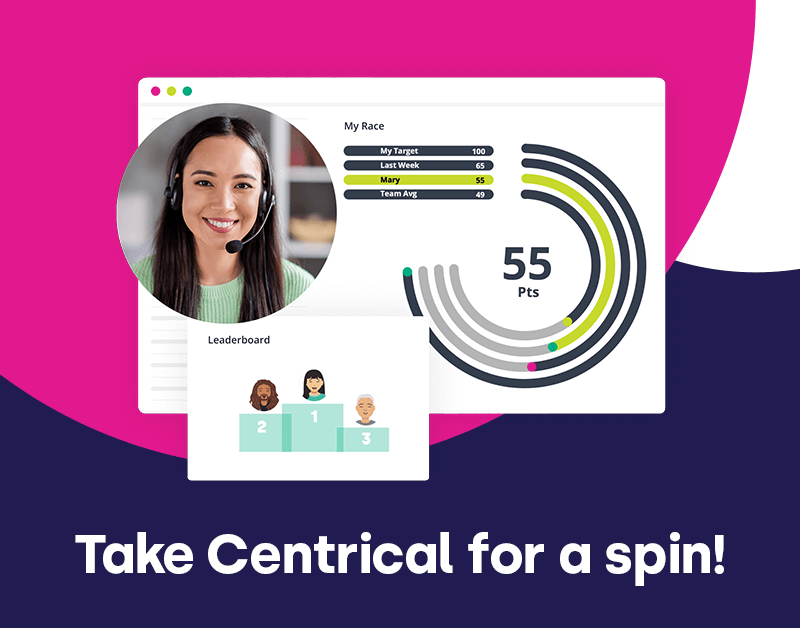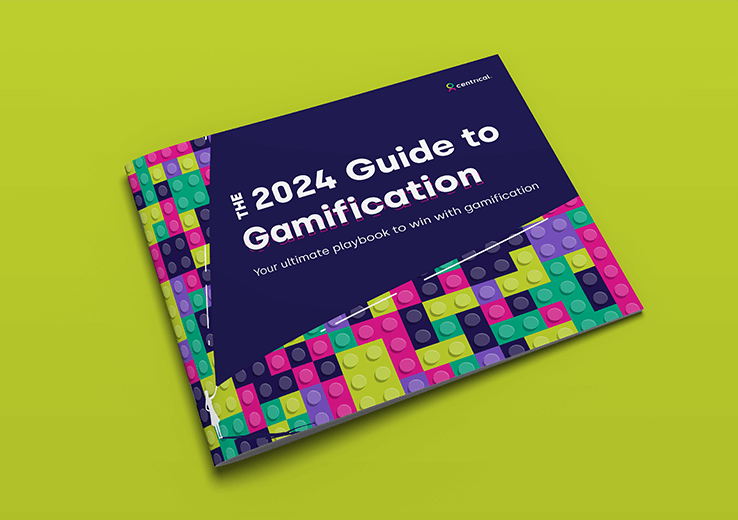Music and Languages: eLearning gamification examples for the well-rounded
In 2010, educational technology pioneer Bernard Luskin advocated that the “e” of e-learning should be interpreted to mean “exciting, energetic, enthusiastic, emotional, extended, excellent, and educational” in addition to “electronic.”
Dr. Eric R. Parks, Founder and President of ASK International, suggested that the “e” refer to “everything, everyone, engaging, easy.”
What they are saying is that eLearning isn’t about the method of delivery – through “electronic”- but that it carries the potential of engagement. Gamification is a big part of the potential of elearning.
Based on a deeper understanding of human nature, how we learn and what motivates us to do so, it is evident that eLearning that incorporates game mechanics is far more successful. Why? Because people intrinsically love levels, missions and the satisfaction of doing something well. We are even prepared to repeatedly experience the “agony of defeat” to enjoy the “thrill of victory,” the feeling of success, that we have mastered something, that we have surmounted a challenge.
Given these insights, anything perceived as worth doing or worth learning is a perfect candidate for implementing gamification — whether its learning to play an instrument, learning a new language, learning to use the latest Microsoft Office, or even furthering one’s higher education. In fact, here is a closer look at five examples of successful elearning gamification.
Guitar Hero and Joy Tunes:
>
“If music be the food of love, play on.” William Shakespeare
Most of us love music; not all of us can play it. However, it often takes years of practice… However, what if the learning curve was shortened and more fun? Guitar-Hero made waves when it offered people the opportunity to learn to play a video game guitar. Instead of frustration at the time it takes to learn guitar, guitar hero gave users immediate feedback and instant gratification. Do you know what the inventors of guitar hero are doing today? They’ve invented hardware that turns treadmills, ellipticals, and stationary bikes – the stuff of training – into devices that are integrated with games.
Music learning gamification is about that same thing: providing immediate feedback, gradually increasing levels of difficulty and constructing a manageable learning curve.
JoyTunes’ award-winning Piano Maestro app uses the same approach for teaching piano. The app, that combines music methodologies with the latest in game mechanics, works directly with a real music instrument, no wires or cables needed. The app gives immediate feedback on playing, awards stars, and players unlock pieces as they move up in rank. It engages by encouraging children to
“Progress up in chapters, unlock new songs and raise their difficulty level along the way. Learn to play songs step by step and have access to practice options and be able to personalize their learning experience”
With 4 million users and a million songs played weekly, the app may show a way to make piano practice more fun.
Duolingo
“To have another language is to possess a second soul.” ~ Charlemagne
While many would agree with this quote and dream of learning a foreign language, it remains that — a dream. For students who are forced to do so at school, the dream can be more of a nightmare. DuoLingo has found a way around this — students learn a language online for free, while helping to translate websites and documents. They advance through stages of complexity, vote on each other’s translations, receive valuable feedback, are rewarded for success, and many other game mechanics challenge, motivate, and engage them — just as successful gamified eLearning should!
Ribbon hero
“Whenever you are asked if you can do a job, tell ‘em, ‘Certainly I can!’ Then get busy and find out how to do it.” ~ Theodore Roosevelt
No matter how qualified you are in your profession and whether you need it or not, there are few jobs out there today that don’t require proficiency in Microsoft Office. Don’t despair, Microsoft’s epic game Ribbon Hero is here and available as a free download that can teach anyone how to use Office 2007 and 2010. Players are given challenges divided up into bite sized sections, earn points if they are completed, receive short relevant tasks as well as immediate feedback and reinforcement to keep them engaged and interested. The game is not too difficult, yet challenges and provides enough success to encourage further play and skill development. Basically, it hits the nail on the head of our intrinsic love of play, games, missions, fun, and winning. Ribbon Hero is also responsive to a users’ progress and adjusts challenges accordingly.
Udacity
“Tell me and I forget, teach me and I may remember, involve me and I learn.” ~ Benjamin Franklin
Mr. Franklin had no idea that he was describing the essentials for effective gamified eLearning. The same essentials harnessed by Udacity — the online university “by Silicon Valley” that offers free courses designed by educators and engineers in order to bridge “the gap between real-world skills, relevant education, and employment” as well as “to bring accessible, affordable, engaging, and highly effective higher education to the world.” Why the emphasis on engaging? Because Udacity recognizes that “education is no longer a one-time event but a lifelong experience” and “should be less passive listening (no long lectures) and more active doing.” As such, each course consists of several units comprising video lectures with closed captioning, as well as quizzes to help students understand concepts and reinforce ideas, and follow-up homework to promote a “learn by doing” model as opposed to learning by rote. This also stresses the point that even in companies use gamified eLearning to teach new recruits the ropes, the learning should be ongoing and not end abruptly after week one.
What do all these examples have in common? They are genius applications of gamified eLearning where the “e” means exciting, energetic, enthusiastic, emotional, extended, excellent, educational, engaging, easy, and for everyone!
Engage and motivate your frontline teams
Improve performance with an AI-powered digital coach
Deliver world class CX with dynamic, actionable quality evaluations
Boost performance with personalized, actionable goals
Nurture employee success with the power of AI
Listen and respond to your frontline, continuously
Drive productivity with performance-driven learning that sticks
Drive agent efficiency, deliver client results
Keep tech teams motivated and proficient on products and services while exceeding targets
Maintain compliance while building customer happiness and loyalty
Enlighten energy teams to boost engagement
Engage, develop, and retain your agents while driving better CX
Improve the employee experience for your reservations and service desk agents



 Madeleine Freind
Madeleine Freind
 Natalie Roth
Natalie Roth Linat Mart
Linat Mart












 Doron Neumann
Doron Neumann Gal Rimon
Gal Rimon Daphne Saragosti
Daphne Saragosti Ella Davidson
Ella Davidson Ariel Herman
Ariel Herman Ronen Botzer
Ronen Botzer